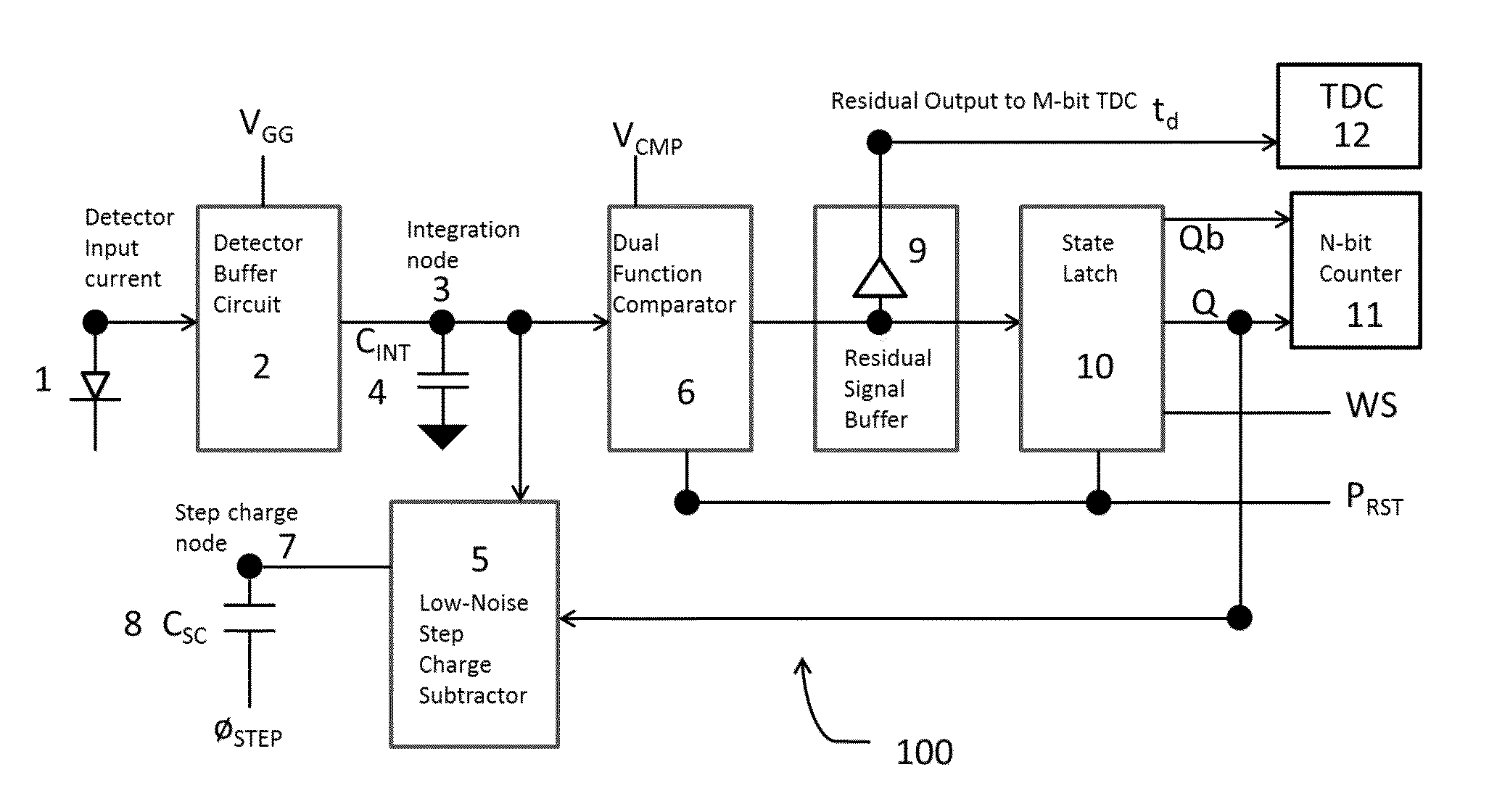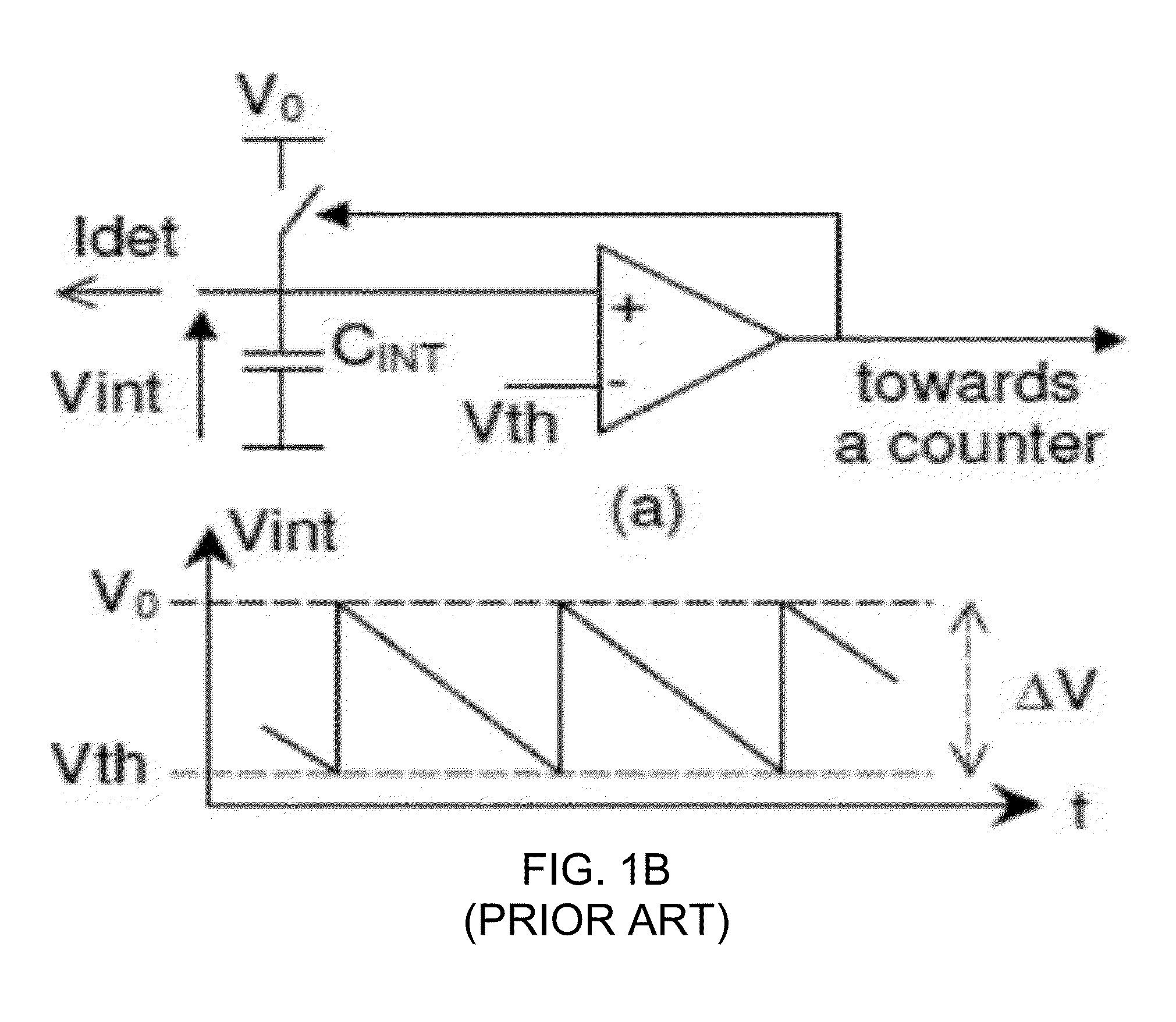Low power ADC for high dynamic range integrating pixel arrays
a high dynamic range, pixel array technology, applied in analogue/digital conversion, television systems, instruments, etc., can solve the problems of difficult to achieve very large charge capacity in small pixel pitch, analog circuits that do not scale well, and increase transistor noise for smaller pixel pitch, so as to reduce csc capacitance and reduce charge reset noise
- Summary
- Abstract
- Description
- Claims
- Application Information
AI Technical Summary
Benefits of technology
Problems solved by technology
Method used
Image
Examples
Embodiment Construction
[0029]Disclosed herein is a low power two-step ADC, such as one that may be used in a large imaging array. An exemplary embodiment is depicted in FIG. 4. A low power two-step ADC 100 is connected by a detector buffer circuit 2 or other signal conditioning circuitry to detection components, represented as a diode 1. An input integration node 3 is a point at which current from the detector enters the circuit 100 substantially unchanged by the circuit 100. An integrating capacitor 4, a step charge subtractor 5 and a dual function comparator 6 are each connected in parallel to the integration node 3.
[0030]The detector buffer circuit 2 isolates the detector from the charge integration node 3 which is dominated by capacitor CINT. In some cases, such as a detector with large reverse bias capability, a detector buffer circuit is not required and charge integration can occur directly on the detector capacitance. The most simple detector buffer circuit is am input transistor comprising a low ...
PUM
 Login to View More
Login to View More Abstract
Description
Claims
Application Information
 Login to View More
Login to View More - R&D
- Intellectual Property
- Life Sciences
- Materials
- Tech Scout
- Unparalleled Data Quality
- Higher Quality Content
- 60% Fewer Hallucinations
Browse by: Latest US Patents, China's latest patents, Technical Efficacy Thesaurus, Application Domain, Technology Topic, Popular Technical Reports.
© 2025 PatSnap. All rights reserved.Legal|Privacy policy|Modern Slavery Act Transparency Statement|Sitemap|About US| Contact US: help@patsnap.com



